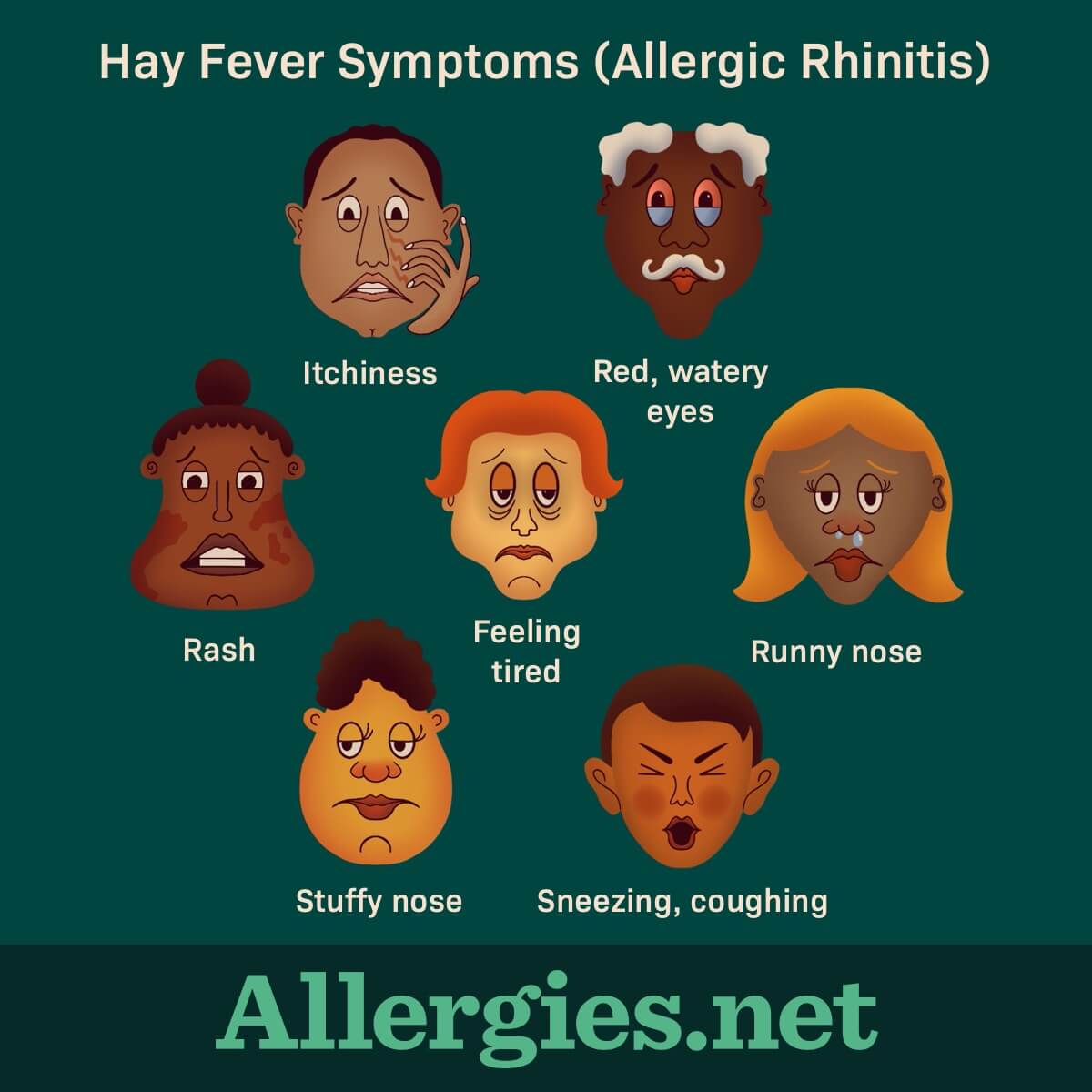Environmental Allergies
Reviewed by: HU Medical Review Board | Last reviewed: March 2022 | Last updated: February 2023
When someone has an allergic reaction to something in their environment, they are said to have an environmental allergy. About 1 of every 5 people in the United States are diagnosed with environmental allergies. Two out of every 3 people with asthma also have environmental allergies.1
Common environmental allergens
An allergen is anything someone has an allergic reaction to. Environmental allergens can be found indoors and outdoors. Some common environmental allergies include:2-4
- Dust
- Mold
- Pollen
- Grasses and trees
- Animals (dust mites, cockroaches, cats, dogs, horses)
Types of environmental allergies
Environmental allergies fall into 2 types, and some people have both:1,2
- Seasonal (spring, summer, fall)
- Year-round (perennial)
Seasonal allergies are usually caused by outdoor mold and pollen from trees, grasses, or weeds. Year-round allergies are usually caused by things found in your environment all year long. This includes dust mites, pet hair or dander, cockroaches, or indoor mold.2
These allergies sometimes mimic the common cold or even early stages of the flu. Environmental allergies may also aggravate asthma, if a person has both conditions.3
Symptoms of environmental allergies
Environmental allergies lead to a condition called rhinitis. Rhinitis can be allergic or non-allergic.2-4
Allergic rhinitis is better known as hay fever. Hay fever symptoms may vary depending on what you are allergic to and how severe your allergy is. Symptoms can be mild, moderate, or severe. The most common symptoms include:2-4
- Runny nose
- Sneezing
- Itchy eyes, mouth, or throat
- Rash or hives
- Coughing or wheezing
- Stuffy nose
- Red and watery eyes
- Feeling tired
People with non-allergic rhinitis tend to be triggered by things like:2-4
- Smoke
- Air pollution
- Cleaning products
- Pool chlorine
- Strong smells
- Some food or drink
- Weather changes
This type of rhinitis may cause a stuffy or runny nose, cough, or sneezing. It generally does not cause itchiness. However, many of the symptoms look the same as allergic rhinitis.2-4
Diagnosis
You may suspect you are allergic to something in your environment before going to your doctor. You may notice you get a stuffy nose and itchy eyes every spring when trees bloom. Or, you may start sneezing and itching every time you are around your mother's cat.
These are important clues to share with your doctor. Self-diagnosis is only the first step. You will need to see an allergist to get an official diagnosis of an environmental allergy. Your allergist will conduct a physical exam and ask about your health history. Then, you may need allergy tests. Allergy tests may include:2,4
- Skin prick test
- Intradermal skin test
- Blood test
If you are not only keeping a symptom diary, your doctor may ask you to keep 1 before your tests. This diary is simply a list of:
- Your symptoms
- When symptoms occur
- What seems to make things worse
- What seems to help
This information may help your doctor narrow down what to test you for.
Treatment for environmental allergies
Like other types of allergies, one of the first steps to managing your allergies is prevention. This means doing what you can to avoid your triggers.
When you cannot avoid your triggers, over-the-counter and prescription medicines can be used to control symptoms.Treatments for environmental allergies include:2-5
- Antihistamines
- Decongestants
- Nasal steroids
- Leukotriene receptor antagonists
- Allergy shots (immunotherapy)
- Eye drops
Treatments that are not recommended for environmental allergies include antibiotics and nasal surgery. Antibiotics only treat bacterial infections, not viral infections like the common cold or rhinitis. Nasal surgery may help if a person has nasal polyps or chronic sinus infections along with their environmental allergies.3
Living with environmental allergies
Allergic rhinitis is known as hay fever, but it does not cause a fever. Plus, you do not have to be exposed to hay to have allergy symptoms. However, hay is a type of grass, and some people are allergic to it.2-4
Environmental allergies impact people’s lives in many ways. The Allergy & Asthma Network estimates that:1
- 4 million work days are missed each year
- $8 billion is spent each year on environmental allergies
- Half of all people with these allergies say it negatively impacts their daily life
Connect with other people who are impacted by environmental allergies here on our Allergies.net forums.
